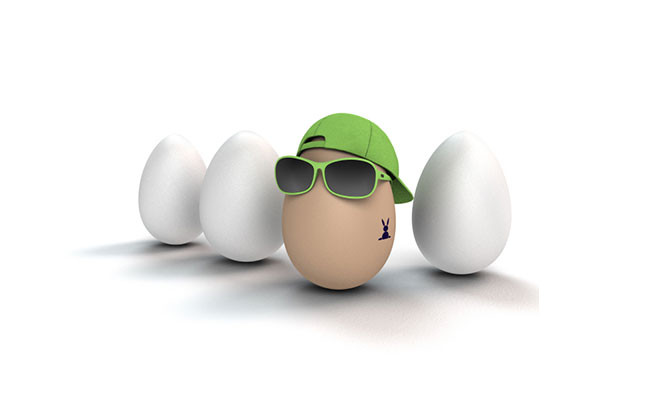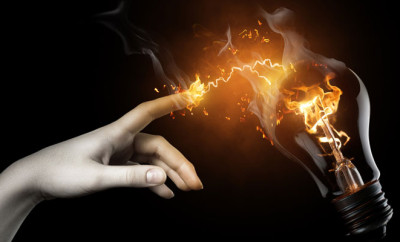
Symbolic Modelling
Below is a 10 minute video clip from a Symbolic Modelling session. It illustrates a number of points about: the use of the Clean Language of David Grove; working with client-generated metaphor; and facilitating a client to self-model.
The clip has been taken mid-way through a Symbolic Modelling session recorded 26 January, 2004. The client had stated his desired outcome as: to get clear about a decision about the next direction in my life. After modelling this outcome, the client identifies a metaphor of “a movie that has just started”. The clip begins soon after.
In the clip I use Clean Language to facilitate the client to develop his metaphor. You’ll see how I follow the logic of the changes entirely from within the metaphor. This means the client does not need to translate any of my personal metaphors, beliefs or ideas into his understanding. Because of this, while some of the questions may seem strange to an observer, they make perfect sense to the client (even when he cannot answer them).
The clip is a good example of working with the embodied nature of metaphor. In particular you’ll notice how I use my gestures to point to where symbols are located from the client’s perspective in his perceptual space — rather than from my perspective in my perceptual space (which is common to almost all other types of facilitation).
I recommend you view the clip before reading on. Roll your cursor over the logo below and click the play button on the navigation bar that appears. If you can’t see a navigation bar or logo, the video is also availablehere. The clip ends when I ask the client to consider the effects of his metaphor on his original desired outcome.
Below is a transcript of the clip. I have added an annotation which describes how my choice of clean question is based on the information provided by the client, and the inherent logic of the private, perceptual and psychoactive world the client is living in during the session.
C = client, J = James the facilitator.
Words in bold have been introduced by the facilitator and make the syntax of clean questions easy to see.
The transcript starts 40 minutes into the session.
| Verbatim Transcript | My annotation | |
| J1 | And this movie has started, and the action, and you are into it, and the walk way, and people on it. And what happens … | Directing client’s attention to the key symbols in his metaphor. |
| C1 | It’s very much just starting, just starting now. | |
| J2 | Just starting now. So what happened just before it started? | While the motif of the metaphor is forward in time (“movie”, “started”, “walk”) the client’s double emphasis on “just starting” indicates the importance of the event-threshold “start”. Therefore instead of moving time on, I direct the client’s attention to the other side of the threshold, “just before” it started. |
| C2 | The music and the credits | |
| J3 | The music and the credits. What kind of music? | I have three choices about how to stay with what the client is attending to: “music and credits” or “music” or “credits”. I chose “music” because it presupposes a means of perceiving (hearing) which, I assume, will encourage the client to deepen his experience of this state. |
| C3 | I suppose a bit of a spark, a bit of a you know. Just like something that just sparks it off. It seems a bit lifeless, just being still in space. Then if you put some loud music to it, it becomes alive, becomes a bit more real, more exciting. | |
| J4 | So the music is like the spark and then it becomes more lively, more lifelike. | While “lively” and “lifelike” are not the client’s exact words I guess they were close enough not to jar the client out of his introspection. My aim is to continue keeping the client’s attention where it is because his non-verbals indicate that his Landscape is becoming more psychoactive. |
| C4 | Makes me feel like I want to go on holiday now. | |
| J5 | And is there anything else about that spark? | I keep his attention on “spark” because it encompasses both the auditory and visual modes of perceiving, as well as the original metaphor of “just starting”. |
| C5 | Yes, it’s very natural, it’s a natural spark. It’s not like an electric kind of fuzey spark. It’s more like … something lighting up, like the thing lighting up. | |
| J6 | So it’s a natural spark and like the thing lighting up. And when it’s a natural spark, where could the natural of that spark come from? | The client seems to be living the experience in the moment. I considered staying with “natural spark” by asking another developing question. Instead I thought the source of “natural” might be even more resourceful than the “spark” itself — to find out I ask the ‘Where come from?’ question. |
| C6 | From me. | |
| J7 | From you. Whereabouts from you? | Given that I am on a vector for the client to find the source of the “natural spark” resource, there’s really no other question to ask. |
| C7 | From me. From here . | |
| J8 | Whereabouts from here? | Ditto |
| C8 | From right in the breadbasket. | |
| J9 | Right in the breadbasket. Whereabouts in the breadbasket. | Ditto |
| C9 | Just right here . Right, right there. | |
| J10 | There . So when it came from right there, right in the breadbasket, is there anything else about right there , where the natural of that spark came from? | I judge the client’s attention is right at the location of the source of the spark resource, so time to turn his attention to what is there. |
| C10 | Yeah, it’s my natural energy. It’s my natural energy. | |
| J11 | Your natural energy. So what kind of energy is that natural energy? | I’m simply facilitating the client to develop the qualities of his new metaphor. |
| C11 | It’s good and playful and strong and bright and good. Yeah. Yeah. | |
| J12 | Strong, bright, playful natural energy. Is there anything else about that natural energy? | The client appears to be deepening his experience of this state, so I just stay put. |
| C12 | Yeah, it hasn’t been there for a while. It hasn’t been there for a while. | Now the client’s attention shifts to how long it hasn’t been there – i.e. his past. |
| J13 | So it hasn’t been there for a while. And that natural playful good energy is where the natural spark comes from. | |
| C13 | Yes. | |
| J14 | So when there is a natural playful energy that hasn’t been there for a while, where does that energy come from? | I continue in the same direction by facilitating the client to identify the source of “energy”. Remember “energy” is itself the source of “natural spark”. Therefore I’m directing the client’s attention to the source of the source of a resource :o) |
| C14 | I think it’s always there, but it’s been covered. Yeah, I don’t think it can go away. It’s masked, or hidden or covered. | Several (potentially significant) revelations – “always there” (is about his past), “don’t think it can go away” (is about his future) and “masked” or “hidden” or “covered” (is about his present). That all three time frames are mentioned somehow gives gravitas to the client’s response. My salience signal has been activated. |
| J15 | Masked or hidden or covered. So what kind of masked, hidden or covered is that? | We are going to stay right here. And I’m not going to choose between “masked, or hidden or covered” so I use all three. (Actually I think all three metaphors are referring to the same experience.) |
| C15 | A little bit of confusion. It kind of feels, I just had a knee operation so I haven’t been walking so good for the last 6 or 8 months so I kind of feel like my natural fitness is down and the January weather is grey. All that sort of stuff feels like it’s covering it. And I’ve been feeling a bit stuck and glued. So all of that’s kind of covering it. | “A little bit of confusion” is another present time meta-comment which suggests the client is on unfamiliar ground.Metaphors galore, interspersed within memories of actual events. |
| J16 | So the stuck and glued, the grey of the January weather, the knee, the feeling a bit down. All of that can cover the natural energy. | Recapping the logic of the Landscape aims to maintain the client’s attention where it is. Since he is doing lots of processing my job is to keep out of the way. I have no idea what else to do so I’m waiting for a sign of the next direction from the logic of the client’s Landscape. What I’m not going to do is develop the metaphors of “stuck and glued” because that would take the client into a problem state and I’m on a vector to develop a resource that is part of his desired outcome. |
| C16 | Yes. But when you asked me I knew it was there. | He knew “energy” was there even though it was covered. This makes “knew” another resource. |
| J17 | So you knew it was there. | I acknowledge the new resource; however I do not develop it at this moment because I think the vector started at J6 has more salience, given the client’s desired outcome. |
| C17 | Yes. | |
| J18 | So what happened just before that natural energy sparked that music that started that film? | I should have used “movie” instead of film, but in this case, it didn’t seem to make a difference.One of my aims is to keep all of the Landscape active and in awareness (spinning plates is my metaphor). With this question I can both invite the client’s attention to just before the energy sparks, and replay the events in order so that the whole sequence remains in his awareness. |
| C18 | I don’t know. I feel a kind of a lightness . Maybe it was there but it just started to move a little bit. | Several indications that something new is happening. |
| J19 | So maybe it was there and it started to move. And as it started to move, what kind of move is that move? | “Move” resonates with “action” and “started” at the beginning of this transcript. By directing the client’s attention to it ‘as it started’ I’m expecting he will self-model the process of “starting to move”. I am now going live on a new vector of developing an in-the-moment process. |
| C19 | Come up. To grow and move up. | |
| J20 | It started to come up. And as it started to grow and come up, it started to grow and come up like what? | I continue on the same vector and request a metaphor for the movement “grow and come up”. |
| C20 | It’s only coming up a little bit at the moment but it’s kind of like, like lava coming up a volcano, but not like going shoooof at the top. It feels like a heat energy rising, as in a very warm energy rising. | “Only coming up a little bit at the moment” is recapitulating the structure of “just starting now” in C1. |
| J21 | A warm energy rising. And as that warm energy rising, then what happens? | I could have stopped time moving forward and facilitated the client to further develop the “lava” metaphor, but his description already contains quite a few fine distinctions. Also I can see the client is nonverbally living this metaphor. So I stay with the moving time forward motif (and hence on the same vector), and direct his attention to the next event in his process. |
| C21 | I’m not sure this time. Because I think … What happens? I think I feel pretty good. I think it makes me feel like youthful again when it was more natural. I think that’s what’s going to happen. | Interesting temporal shifts in his language. |
| 22.J | More youthful… | |
| C22 | More energetic, less cloudy. | |
| J23 | More energetic, less cloudy. And so when you feel more energetic and less cloudy as that natural heat and warmth rises, from an energy that’s always there, but can be covered or hidden … and a lightness, what would that energy like to have happen? | By recapping I spin the plates again and direct his attention to “energy”. The client has already specified his desired outcome, but given that “energy” is “masked”, does he know energy’s desire? |
| C23 | Well I think it wants to be pretty big. Oh yes. | |
| J24 | It wants to be pretty big. And what needs to happen for that energy to be pretty big? | This question stays with energy’s outcome “to be pretty big” but slightly shifts the time frame to the circumstances under which that outcome would happen. |
| C24 | I’ve got to let it be big. And I’ve got to help it to be big. | |
| J25 | You’ve got to let it and help it. What kind of let it and help it is that? | Developing the characteristics of the circumstances needed for energy “to be pretty big”. |
| C25 | I think, to make sure my body is in good condition, my mind is rested and I’m not too confused. And I’ve got to be natural with it. Give it the right conditions that it needs. Not restrict it in bad ways. | |
| J26 | So what kind of conditions does it need? | More developing. |
| C26 | Sunshine, nice environment, exercise from me, good food. Healthy lifestyle. Happiness. Not to be crammed in, so not working in London again. To be free, to allow it to be free to grow. Not have it restrained or bashed or … yeah. | |
| J27 | So the conditions it needs is not to be constrained, to be free, to grow, for you to be healthy … and all of those other things. And so when those are the conditions which energy and heat will rise that will mean there was a spark that sets the music to that movie, then what happens to a decision about these directions or a pathway that’s like these together as one ? | The client now knows that the “conditions” for “energy” to be the way it wants and I am still holding in my mind the client’s original desired outcome — is he? |
Use of “so”
Traditionally David Grove started his clean questions with the word ‘And’. In Metaphors in Mind Penny and I wrote:
STARTING WITH ‘AND’
All clean language sentences start with the conjunction ‘And’. Its function is to connect, to add, to continue. As well as being a gentle way of starting, ‘And’ signals that what is about to be said will not be a dialogue in which two minds compete for centre stage. Instead it says: ‘What I am about to say is a continuation of what you have just said’. With repeated use, ‘And’ sends a mostly out-of-awareness message to the client: this whole interaction is to be conducted from your perspective.
Footnote: The exception is ‘So’ which is occasionally used to start Clean Language sentences, especially when ‘backtracking’ and ‘accumulating descriptions’.
David Grove sometimes started his questions with “so”, especially when he was emphasising the logic in a client’s Metaphor Landscape. The transcript shows I’ve obviously picked up the use of “so”. While I don’t think it interfered with this client’s processing (which is the determining factor) my advice is: do as I say and not as I do — use “And” most of the time.
Analysis of questions
In this section I spoke 27 times. In six I repeated back the client’s information without asking a question. Doing so, especially when using a rising inflection will often prompt the client to add more information. (This can be an advantage or a disadvantage depending on the verbosity of the client and how good you are at handling masses of data.) These reflections play an important role in acknowledging the client’s experience just as it is.
Simple as repeating back the client’s words seems, the facilitator is still playing an important role. They usually have to select a subset of words from what the client says. This invites the client to foreground that aspect of their experience (thus backgrounding the rest).
Of my 27 interventions, 21 were questions. These were chosen because they invite the client
Hold time still and develop the current perception:
6 – What kind of?
3 – Anything else?
3 – Where/whereabouts?
1 – Like what?
Move time back:
2 – What happened just before?
2 – Where could/does X come from?
Move time forward:
2 – Then what happens?
Identify a desired outcome or necessary condition
1 – What would X like to have happen?
1 – What needs to happen?
You’ll see that only nine types of question were asked in four categories. All nine are from the basic Clean Language questions set (version 3) depicted as ‘The Molecule of Perception’ in Clean Language Revisited: The evolution of a model.
The following pie chart uses the colour scheme of ‘The Molecule’ to illustrate the proportion of each question asked:

Fig. 1 – Proportion of questions asked during the session
Of the 21 questions asked, 13 developed whatever was in the client’s perception at that time. It is common for two-thirds of all Symbolic Modelling questions to be of a type that invite a client to attend to what they are already paying attention to (i.e. “developing” the Landscape).
The reason the proportion is so high is because, as it’s name suggests, it is a modelling process. And in particular, its primary aim is for the client to self-model. To do that the client needs the time and space to become familiar with what makes up their internal world — and that is best done by attending to what is already there.
David Grove said, “Change takes place within a context.” When the arrangement is for therapeutic modelling, developing questions create such a context.
Apart from developing questions, the other questions directed the client’s attention to an aspect of their experience they were not necessarily aware of at that moment. In this case they either moved time — back or forward; or invited the client to consider a preferred outcome and under what conditions that outcome would happen.







